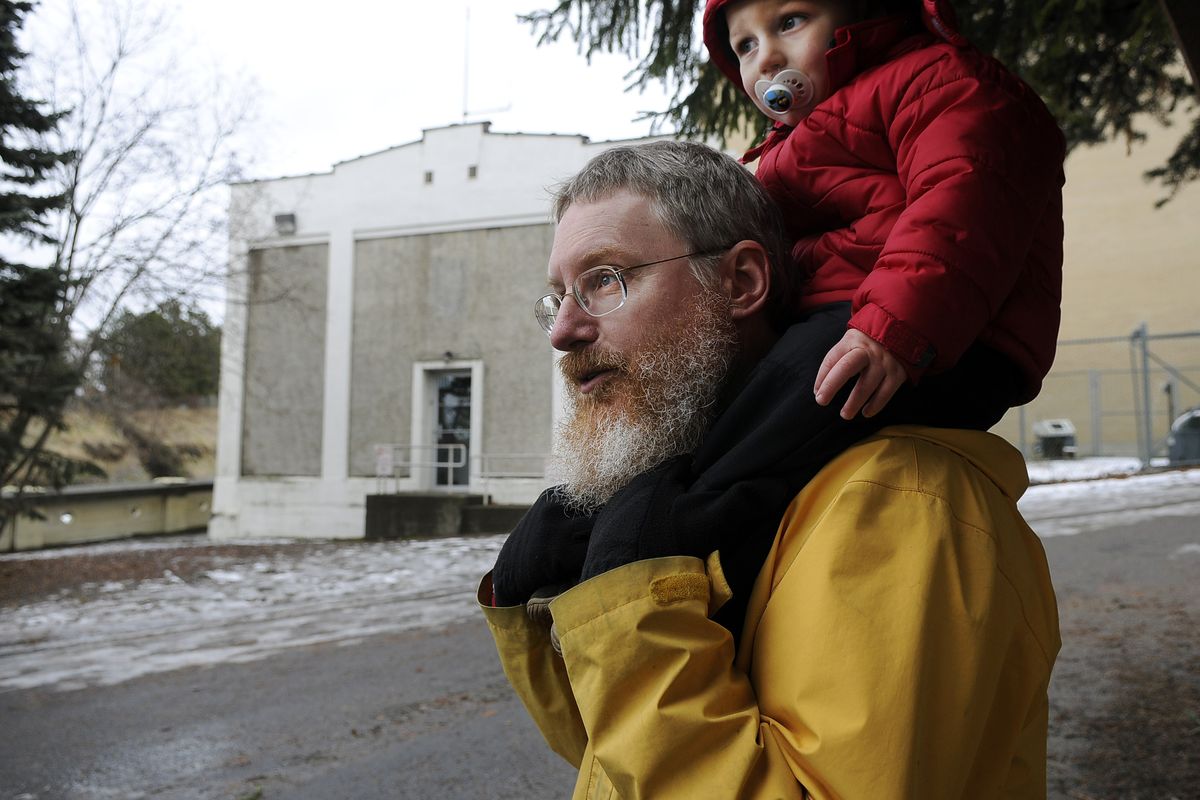Old alarm center set for demolition if landmarks panel agrees

On the bank of one of the most dramatic parts of Spokane Falls is a mostly ignored vacant building that may soon be handed the same fate as its neighbor – the former YMCA.
Spokane city leaders have requested a demolition permit for its former fire alarm center. The building, which sits just west of the old YMCA, was built in 1922 by Washington Water Power as a storage vault.
The former Y is slated for demolition in February. City leaders say they have no use for the old vault and that with the YMCA soon to disappear they’d also like to restore the dramatic views from the fire dispatch center.
“It would be far cheaper for the taxpayer to have them both taken down at the same time,” said Gerry Gemmill, Spokane’s deputy public works and utilities director.
But to win the demolition permit, the Spokane City-County Historic Landmarks Commission must first decide if the structure is eligible to be listed on the local or national historic registries. If it’s eligible, a city law protecting historic buildings would complicate the city’s plans.
The Spokane City Council agreed to move the fire dispatch center from the former City Hall to the site along the middle channel of Spokane Falls in 1966, according to a Spokane Daily Chronicle report. Washington Water Power – now Avista – leased the building to the city rent-free. The utlility company later transferred ownership of the site to the city as part of preparations for Expo ’74.
Firefighters were dispatched from the building from 1969 until 2004, when fire dispatch operations were transferred to a combined emergency communications center near Spokane Community College, said Erv Williams, a retired firefighter who started work in the building in 1982 as a fire alarm operator.
Williams said that two fire alarm operators worked out of the building 24 hours a day. A supervisor also worked there on a normal day shift. He said he wouldn’t be bothered if the building was torn down.
“I have some good memories there, but in terms of having any emotional attachment to the building – no,” said Williams, who retired in 2007.
Since dispatch moved, the building has been vacant except during a brief period when some city attorneys worked there during remodeling of City Hall.
Earlier this month, the Landmarks Commission voted unanimously to delay a decision about the building to gather more information.
Kristen Griffin, Spokane’s historic preservation officer, believes the building is not eligible because of extensive modifications made to it. Among them: large windows facing the falls that were cut into the building well after the structure was built, changes to the exterior, and an interior in which “no evidence of its original function or design remains,” Griffin wrote in a report to the commission.
But commissioners noted that the building had a role in the falls’ history providing hydroelectric power. They also said they needed more information about the role it played as a fire dispatch center.
Sam McMurtrey, a Spokane resident and commercial painter who specializes in historic buildings, said the building should be saved and could be used for a park restaurant or other services. He said the building appears to have maintained much of its historic character.
“I think it’s beautiful,” said McMurtrey, taking a break from a stroll through the park on Tuesday. “I’m just so sick of them tearing all these buildings down.”
Spokane resident Steve Zemke said he supports the decision to tear down the Y and believes the park would benefit also from tearing down the alarm center. Zemke was visiting Riverfront Park on Tuesday with his son-in-law and grandson.
“The more you can get open, the better off you are,” said Zemke, an associate mechanical engineering professor at Gonzaga University. “You’ve got to think of it from a 20-, 30-, 40-year perspective.”
Retired assistant city attorney Bob Beaumier worked in the building when City Hall was remodeled. One of his colleagues found the view so inspiring, he invited the mayor to the building and suggested it be used as an interpretive center, Beaumier said.
“It’s right on the edge of the river,” Beaumier said. “It was just beautiful.”